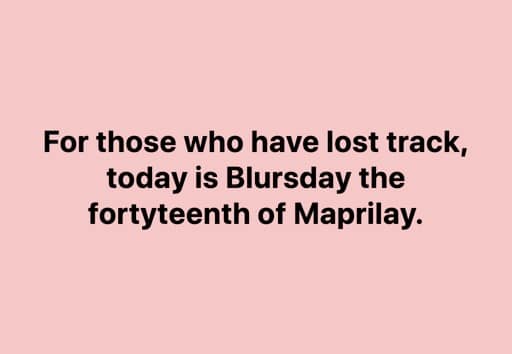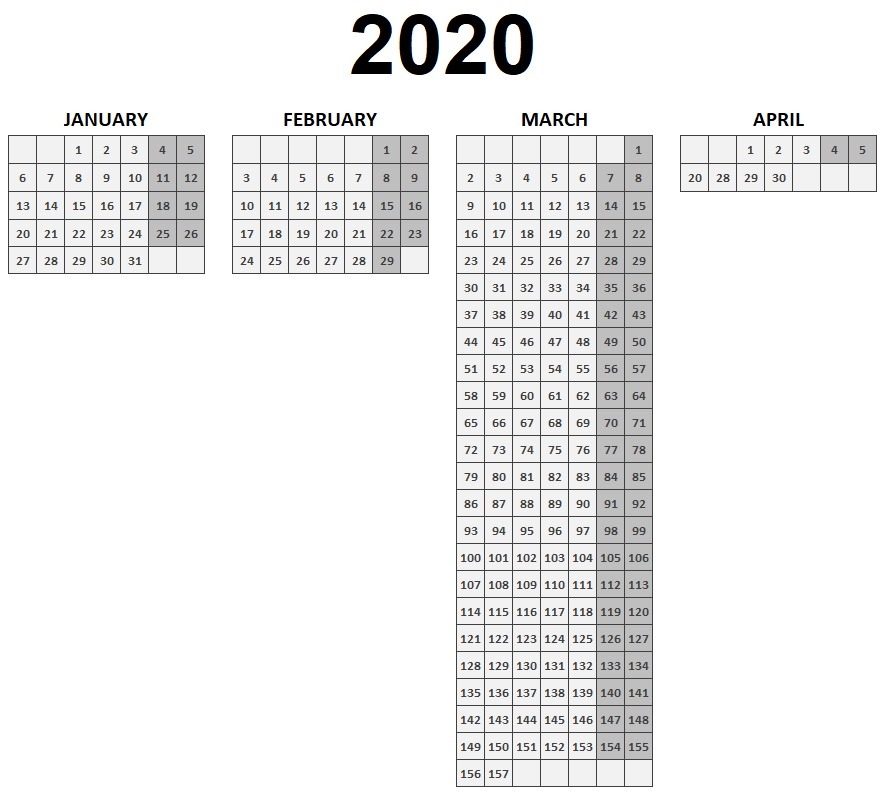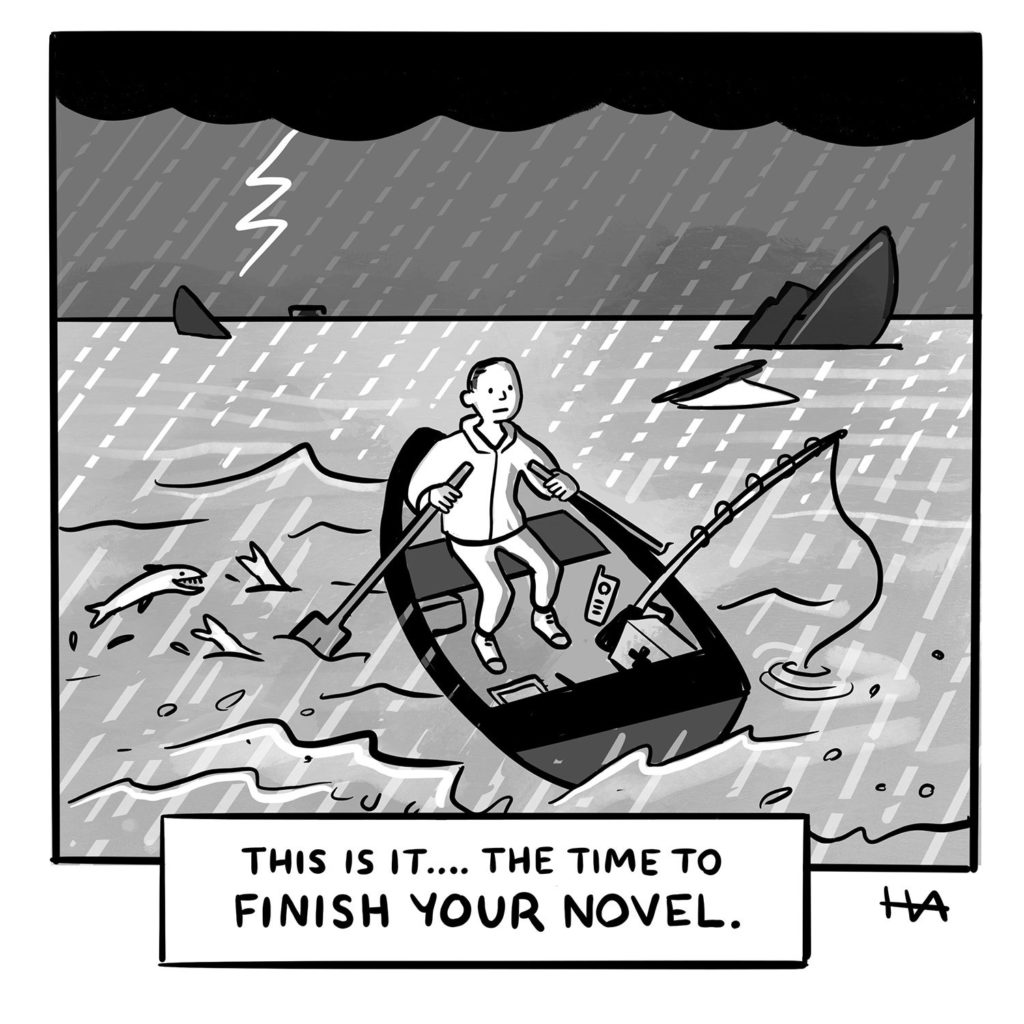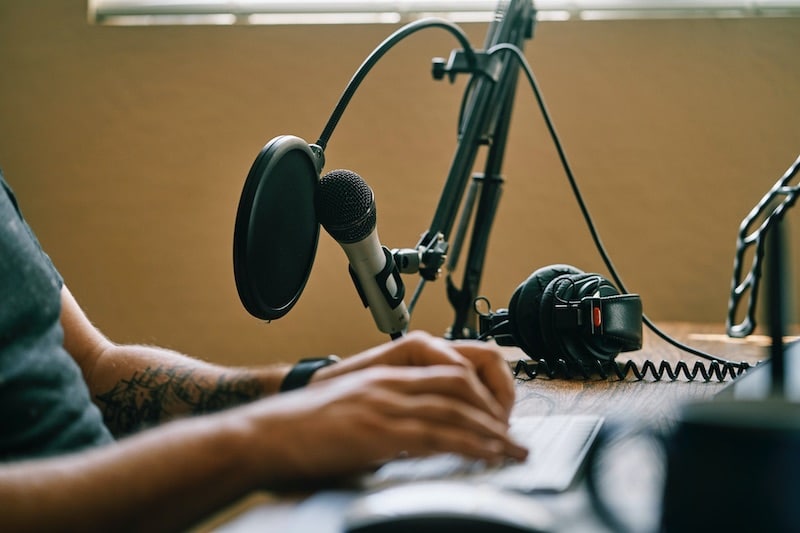Many of us are isolating ourselves in the face of the Coronavirus pandemic. As social animals, that means that isolation takes a particularly heavy toll on us.
How do we survive, stay sane, create, and even innovate as both people and digital marketers– especially when the days all begin to blur into one?
The answer may lie in what we’ve always been told to avoid: taking a break to text, browse social media, or just connect with family and friends.
The third quarter of isolation

This meme gets to the core of what so many people are currently going through. But it’s good for more than just a laugh; it’s also highlighting a phenomenon that’s the actual subject of academic investigation.
Dr Kimberley Norris, for example, studies confinement and reintegration at the University of Tasmania. As Norris explained to Triple J Hack,
“For a little while people were saying how they were loving working in pajamas, and not having to battle morning traffic,” but, Norris observes, “People are now saying they’re feeling really lonely.”
Loneliness is one of the symptoms that you’re entering the third quarter of isolation.
The third quarter has been deemed to be the most distressing in studies of astronauts in isolation. “We don’t understand what’s going on with us,” reported Soviet astronaut Valentin Lebedev, noting that he and his fellow crewmates would, “silently walk by each other, feeling offended,” desperately, he added, “We have to find some way to make things better.”
What studies have found is that it’s not a predetermined amount of time that must pass before this period is encountered, but rather a proportion of time, and it’s consistently been documented as occurring during the third quarter.
A 200 study of researchers working in Antarctica, for example, observed a similar phenomenon, marked by a rise in tension and depressed spirits. And if you’re frequently browsing through Facebook, Twitter, or Instagram, you may have already noticed the third quarter settling in just by the increased presence of memes about time blurring together–a seemingly never-ending March.

When May 1st rolls around, the internet is littered with memes of Justin Timberlake proclaiming, “It’s gonna be May,” but now it feels like March 62nd. On May 4th, people used to gladly share a Star Wars meme and declare, “May the 4th be with you,” but now it’s more like, “March the 66th be with you! Or whatever. Who cares about the math; nothing means anything anymore.”
And we can only hope this third quarter of isolation won’t extend into the New Year, with people collectively writing, while holding back a mixture of laughter and tears, “I keep writing March 2020 on all my checks.”

A very significant difference between self-isolating and trips into space or Antarctica is that this period of self-isolation is open-ended, but research missions have a definitive conclusion. Perhaps it’s a shared hope that isolation won’t be needed when summer rolls around that accounts for the start of the third quarter.
But as states re-open, epidemiologists issue grave warnings that evoke uncertainty and fear in many: Kentucky experienced its highest number of reported cases of infection in the wake of anti-shelter-in-place protests; an even deadlier winter is predicted if Coronavirus mutates and coincides with flu season, and, much sooner, as reported by a leaked CDC memo obtained by the New York Times. June 1st, 2020 may see roughly 200,000 diagnosed cases per day nationwide and about 3,000 deaths daily across the US. This is due in part to easing social distancing requirements too early, the pandemic expanding into rural America, and regions not yet hitting their peaks of new cases.
In retrospect, we may recognize that we weren’t in the midst of the third quarter at all, but, rather, settling into a never-ending March. Don’t be surprised if, again, the collective unconscious begins to produce memes about our shared experience, this time about waiting for America 2.0 before leaving self-isolation.
What is a Digital Marketer to do?
We may be digital marketers, but we’re people first. How do we keep going to not just do our jobs, but to be people at all, especially as mental and physical health takes a hit, and anticipatory grief continues unabated?
One answer lies in the wisdom of Admiral Jim Stockdale, who was one of the highest-ranking military officers in the Hỏa Lò Prison, a prison used by North Vietnam during the Vietnam War.
Referred to as the “Hanoi Hilton” by American prisoners of war, the infamous camp housed the U.S. Senator John McCain, among many others. Stockdale was there for roughly seven years, from 1968 to 1974, and was tortured over 20 times. Yet he survived and even claimed to have come out stronger than when he went in. But who perished?
“I can tell you who didn’t make it out,” Stockdale said to author Jim Collins during an interview, “It was the optimists.” Confused, by this account, Collins asked for further explanation, which Stockdale provided:
“The optimists. Yes. They were the ones who always said, ‘We’re going to be out by Christmas.’ Christmas would come and it would go. And there would be another Christmas. And they died of a broken heart.” Then he grabbed me by the shoulders and he said, “This is what I learned from those years in the prison camp, where all those constraints just were oppressive. You must never ever ever confuse, on the one hand, the need for absolute, unwavering faith that you can prevail despite those constraints with, on the other hand, the need for the discipline to begin by confronting the brutal facts, whatever they are. We’re not getting out of here by Christmas.”
We don’t know when this is going to end.
Embrace being unproductive. It is ok.
Deadlines may come and go, and rates of infection and death may increase, decrease, and generally behave in a manner that’s puzzling and alarming to many. So we have to let go of the idea that we know when March is going to end.
Yet, for those of us lucky enough to work from home, we’re still expected to be productive. How can we do our work? The answer may lie in what critics of working from home have always warned us against: unproductivity.

Source: https://www.newyorker.com/cartoons/daily-cartoon/wednesday-april-29th-novel-crisis
As already mentioned, there’s a lot of differences between people practicing self-isolation and both astronauts and arctic researchers. Nicholas Bloom, a professor of economics at Stanford University, has investigated working from home extensively. He also conducted a frequently cited two-year study on working at home using the employees of a renowned Chinese travel company. Bloom explained these differences to Vox:
[…] all of these people in the China study volunteered to work from home, and they were doing an activity that was not team-based. They were booking telephone calls and speaking to people on the phone and doing data entry, so they don’t need to work with other people. Secondly, they were working from home four days a week, but critically, on the fifth day they were coming into the office, and that was good to keep them tethered to the workplace.
So, in isolation, we’re purportedly missing out on what makes working at an office, in the view of many, invaluable: interaction with others. Bloom even told Vox, “Most creativity is done in face-to-face environments.” It’s a claim made so frequently that Kevin Roose, a technology contributor for the New York Times who writes “The Shift”, dedicated much of his March 10, 2020 column to citing different authorities making this very same point. “Creativity comes from spontaneous meetings, from random discussions,” Steve Jobs once said, “You run into someone, you ask what they’re doing, you say ‘Wow,’ and soon you’re cooking up all sorts of ideas.”
Are such spaces and meetings really gone during isolation (or when working from home)? Of course not! They just take a different form. Over the years, countless studies have been conducted about productivity lost due to social media, instant messaging, and smartphones. But what are people using these platforms and devices for? Personal time– connecting with others and the world at large, sometimes to complain or gush about projects, and sometimes just to check in and connect about anything at all. Are those interactions scripted, or are they spontaneous, serendipitous, creative, and even invaluable?
Breaks can prevent burnout. And as each of these critics of work-from-home points out, breaks are also the very place where moments of inspiration are likely to strike. Breaks are so ubiquitous that brands take notice of what we see during our breaks and put their own spin on it.
Which fridge are you picking? 👇 pic.twitter.com/0Pm7j0Zm8V
— Dr Pepper (@drpepper) May 2, 2020
You can only choose one ☝️ pic.twitter.com/SGxeNGdvKH
— Arby's (@Arbys) April 15, 2020
Wrapping Up
So, take a break to check in with your friends and family. You may already be doing that right now. In fact, enough of us connect with others in the same way that Budweiser was able to use this shared experience to fuel the return of their popular “Whassup?” campaign. That’s how you know you’re creating good content: when you find something we all have in common and point out that, “Hey, we’re going through this too.”
Then and now, saying whassup has always been about staying connected. #Whassup ☎️😝 pic.twitter.com/QWeKuNZ1LU
— WHASSUP? ☎️ (@budweiserusa) April 24, 2020
Whasssupppppppppppp?!?!
Staying connected matters more than ever, and it’s as simple as saying #whassup.
Tag three friends you haven’t spoken to in a while in the comments and say #whassup! ☎️😝🍻 pic.twitter.com/gZimcrN8dp
— WHASSUP? ☎️ (@budweiserusa) April 29, 2020
If these experiences don’t look familiar, then maybe you should try spending less time fantasizing about when March is going to finally end and spend more time taking breaks! That’s how you make it through the third quarter of isolation and that’s how you get inspired.










